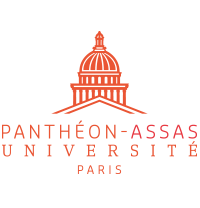Media, War & Conflict

Special Issue: Media and Terrorism in France. (2019). Media, War & Conflict, 12(2) - https://journals.sagepub.com/toc/mwc/current
Ed. Katharina Niemeyer and Staffan Ericson
Alongside the “arrival” of digital communication technologies in the 20th century, the experience of time appears to have been altering. Hartmut Rosa (2013) has labeled this phenomenon social acceleration and François Hartog (2014) has analysed the regime of presentism in relation to the difficulty for historical narratives to take shape. These tendencies, presumably reinforced with the Web 2.0 and other forms of digital capitalism (Wajcman, 2015), concern everyday life communication, the work place, economic and financial exchanges but also the routines of journalists, newsrooms and war correspondents (see Risso, 2017). This evolution has at the same time fostered the so-called slow movements, such as slower journalism or slow food: forms and expressions of resistance or at least tendecies of (commodified) deceleration. These temporal shifts and interplays are also of importance when it comes to the question of terrorism, its organization and mediatization.
This special issue does not focus on the way terrorist organizations adapt to these new temporal realities or how they use communication technologies. Rather, it is interested in how these social changes transform and perform – or not (the idea of social acceleration is not the explanation for everything) – the way news media narrate terrorist attacks, how the reactions to the latter are shared in (online) social media and how the public and institutions try to archive traces of the event for future historical and commemorative work.
INTRODUCTION
From live-tweets to archives of the future: Mixed media temporalities and the recent French terrorist attacks
Katharina Niemeyer and Staffan Ericson
https://journals.sagepub.com/doi/full/10.1177/1750635219853891 (free access)
‘We are at war’: Continuity and rupture in French anti-terrorist discourse
Julien Fragnon
https://journals.sagepub.com/doi/full/10.1177/1750635219846035
Paris and Nice terrorist attacks: Exploring Twitter and web archives
Valérie Schafer, Gérôme Truc, Romain Badouard, Lucien Castex
and Francesca Musiani
https://journals.sagepub.com/doi/full/10.1177/1750635219839382 (free access)
From tweets to graffiti: ‘I am Charlie’ as a ‘writing event’
Maëlle Bazin
https://journals.sagepub.com/doi/full/10.1177/1750635219839395 (free access)
The front page as a time freezer: An analysis of the international newspaper coverage after the Charlie Hebdo attacks
Katharina Niemeyer
https://journals.sagepub.com/doi/full/10.1177/1750635219839378
Charlie Hebdo, 2015: ‘Liveness’ and acceleration of conflict in a hybrid media event
Johanna Sumiala, Minttu Tikka and Katja Valaskivi
https://journals.sagepub.com/doi/full/10.1177/1750635219846033
